Travel and transportation
by Lee Weng Choy
Dear Grace,
In your first two blogposts for the Jakarta Biennale, I noticed a subtle recurrence of metaphors of travel. I don’t think it’s a predominant image that frames your series of remarks. But, to use a word from the title of your second blogpost, this idea of travel, well, it lingered, as I re-read your texts. In your very first post, you spoke of going on a “journey” with your co-curators and artistic director. In the second, you spoke of what an exhibition means to you in terms of a “junction”. Typically, when I think of a “junction”, I think of a traffic intersection or a crossroads—at stake are divergences and choices: do you go straight ahead or turn, left or right, and so on.
It’s natural to want to start a blog for a major endeavour like a biennale by acknowledging that the curators are all in it together—that it’s a process, a journey. But these rituals don’t have to be perfunctory. For me, what makes your particular affirmation a meaningful gesture is that, with it, Grace, you establish that this particular journey is never just a personal one; rather, it always involves travelling with others. Indeed, I would contend that this is a recurrent theme in your curatorial writing: that the interpersonal takes precedence over any individual agenda. Traversing the junction is decided, not by someone travelling on their own personal path, or by a leader giving directions, but the decision is always a discussion, a negotiation with companions as well as with those outside one’s group.
Before the pandemic, arguably one of the defining experiences for the curator of an international biennale was travel, physical travel. Today, forms of travel remain an essential part of the thinking process in the realisation of such projects, but, I suppose, curators have found ways to compensate for the loss of physical movement, and have resorted to other forms of engaging the vast and varied geography of artistic and cultural practices.
Grace, just as you reached for the word, “junction”, when thinking of exhibitions, I too have a word that I have been reaching for lately. That word is “transportation”. As in, the exhibition as a vehicle of transportation. I’ve argued before that one of the functions of art and its public display is to offer other possibilities and forms for the representations of culture and place. Yet one recurring criticism of biennales is that sometimes the curatorial desire to represent diversity ends up becoming, for many visitors, merely an experience of consuming difference. One problem is that while curators often go far and wide to meet a great number of artists and cultural workers for these large-scale projects, and in the course of their research, collect so many fascinating encounters, it is rare to find these back stories adequately translated in the very forms of presentation. The distances that curators and artists travel, as well as the distances between the places of art and the spaces of exhibitions, these are too often compressed or elided in the final display.
Within the more successful biennales, however, I would argue that, as Maria Lind might say, we can experience the “curatorial”, which does not present a survey but gives us a situation; it does not map a “there and then”, but performs a “here and now”, a “now and there” as well as a “here and then”, bridging places and histories. The curatorial can help audiences better understand the ways that each artwork inhabits its own specific contexts, and, at the same time, can take us from the place of art to the space of exhibition, and back again. I’d argue that the most interesting transportation that can happen within exhibitions is not when they bring us to other places—and where our gaze may colonise the “Other”, whether deliberately or inadvertently. Rather, exhibitions can be vehicles that bring the “Other” into our spaces, transforming them, while still creating an experience of us feeling transported.
If the travel that you and I both evoke is always travel with friends or fellow travellers—both familiar and strange—as well as others along the way, still, there is another “with” at stake. Especially for longer journeys, we travel with baggage. Not only our own, but sometimes the baggage of our friends. I’d like to speak more about this issue of “friends with baggage”, and also that condition you mention—trust.
Sincerely,
Weng Choy
This letter is written for Grace Samboh as a node to JB 2021: ESOK’s blog. An exchange between Grace and Weng will be included in Weng’s collection of conversations, “Friends with Disagreements”, which will be published by Stolon Press.
Lee Weng-Choy is an independent art critic and consultant living and working in Kuala Lumpur. He was Artistic Co-Director of The Substation in Singapore, and has taught at the School of the Art Institute of Chicago, the Chinese University of Hong Kong, and the Sotheby’s Institute of Art — Singapore. He has worked with various arts organizations, including Ilham Gallery and A+ Works of Art, both in Kuala Lumpur, and the NTU Centre for Contemporary Art Singapore, and National Gallery Singapore. Lee writes on contemporary art and culture in Southeast Asia, and his essays have appeared in journals such as Afterall, and anthologies such as Modern and Contemporary Southeast Asian Art, Over Here: International Perspectives on Art and Culture, and Theory in Contemporary Art since 1985.
